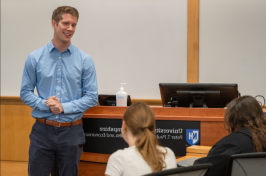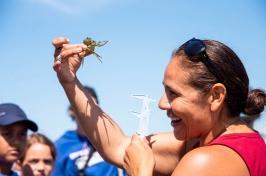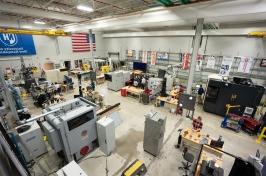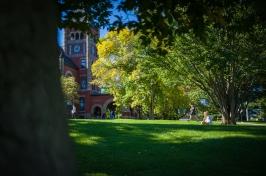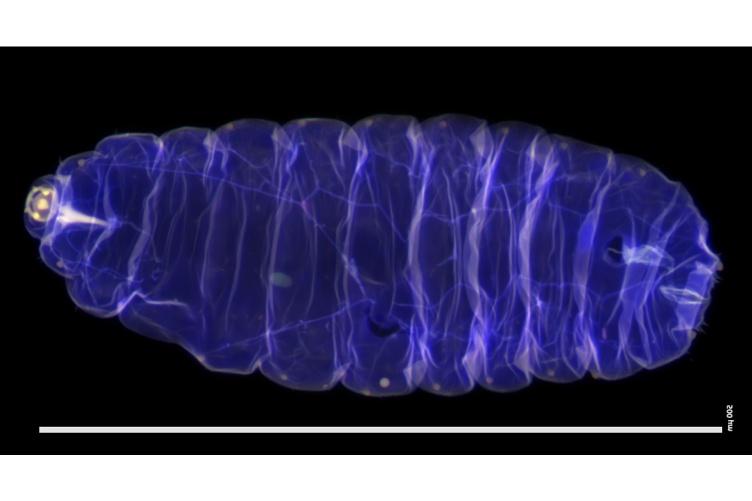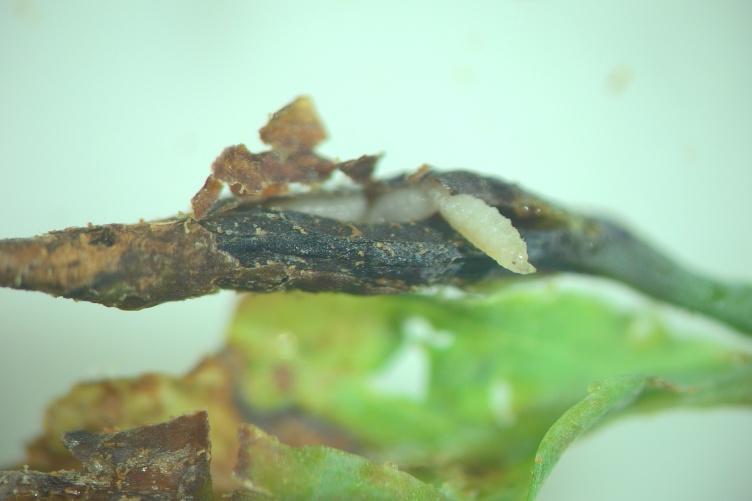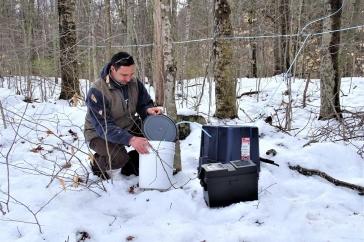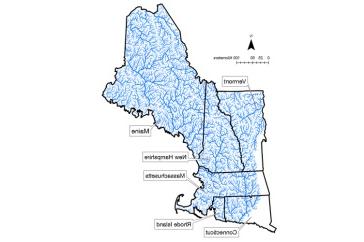The intricate world of taxonomy, involving the discovery and classification of new species, plays a crucial role in understanding and managing biodiversity. For example, UNH’s Insect Collection has been pivotal in more than 12,000 species of insects and other arthropods, making key discoveries – including the identification of new invasive pests to the region like the Asian long horned tick and the southern pine beetle – that can help inform management practices and outreach efforts. One of the latest discoveries, made by COLSA research technician Monique Raymond ’19 ’23G, has been the novel identification of species within the Blueberry Gall Midge Complex (BGMC) – a group of closely related species of fly (known as gall midges) that feeds on and damages blueberry crops. This finding – and others like it made by natural history collections – underscores the critical role of taxonomy in both scientific and practical domains.
Raymond, a recent graduate of UNH’s master’s degree in integrative and organismal biology program, led a study of blueberry gall midges, which are an emerging pest in both high- and lowbush blueberry plants. The pest group is currently comprised of two main species, Dasineura oxycoccana and Prodiplosis vaccinii, and infestations of these species can result in up to 80% flower and leaf bud loss in some regions. A key component of Raymond’s research centered on being able to accurately identify and monitor for these two species, which is critical for effective integrated pest management (IPM) strategies to work.
“Accurate and effective identification of invasive pests affecting agriculture, forestry, and health requires access to reference collection to compare and determine potential biological control agents.” ~ Istvan Miko, collections manager, UNH Collection of Insects and Other Arthropods
“Current monitoring methods really struggle to detect these species, often due to the cryptic nature of the microscopic larvae and a lack of identification resources,” Raymond described. “Without precise species identities, developing effective IPM protocols tailored for these pests – as well as their natural enemies –becomes incredibly difficult.”
One such IPM strategy that Raymond explored in her study involved the use of parasitoid wasps from the Platygastridae family. These parasitoids are specialized to attack gall midges and offer a promising alternative to chemical insecticides, which are often ineffective and harmful to non-target species, including pollinators. Specimens held in the UNH Insect Collection proved critical to determining the identities of these wasps and allowed Raymond to publish a key to platygastrids in blueberry as part of her thesis.
"By accurately identifying the platygastrid parasitoids, we can better understand their interactions with gall midges and develop more effective biological control strategies for the latter," Raymond explained. "This not only helps in reducing the pest population but also promotes sustainable agriculture by minimizing the use of harmful chemicals."
Ultimately, this research provides valuable insights into the management of BGMC and underscores the need for ongoing efforts to develop and implement sustainable pest control methods in blueberry cultivation. This study highlights how taxonomy and natural history collections are key to practical applications, such as developing IPM strategies for the region's cash crops and reducing environmental impacts.
Invasive insects can cause about $70 billion in global crop losses annually and tremendous mitigation costs, with distinct ecological impacts, notes Istvan Miko, collections manager for UNH’s Insect Collection and a research scientist with COLSA.
"Accurate and effective identification of invasive pests affecting agriculture, forestry, and health requires access to reference collection to compare and determine potential biological control agents,” added Miko. “Land-grant universities, like UNH, train entomologists and provide diagnostic services but constantly face pressure to justify the resources and space needed to maintain their natural history collections."
Read more on this research in the paper The Blueberry Gall Midge Complex and its Specialist Parasitoids.
-
Written By:
Nicholas Gosling '06 | COLSA/NH Agricultural Experiment Station | nicholas.gosling@999lsm.net











